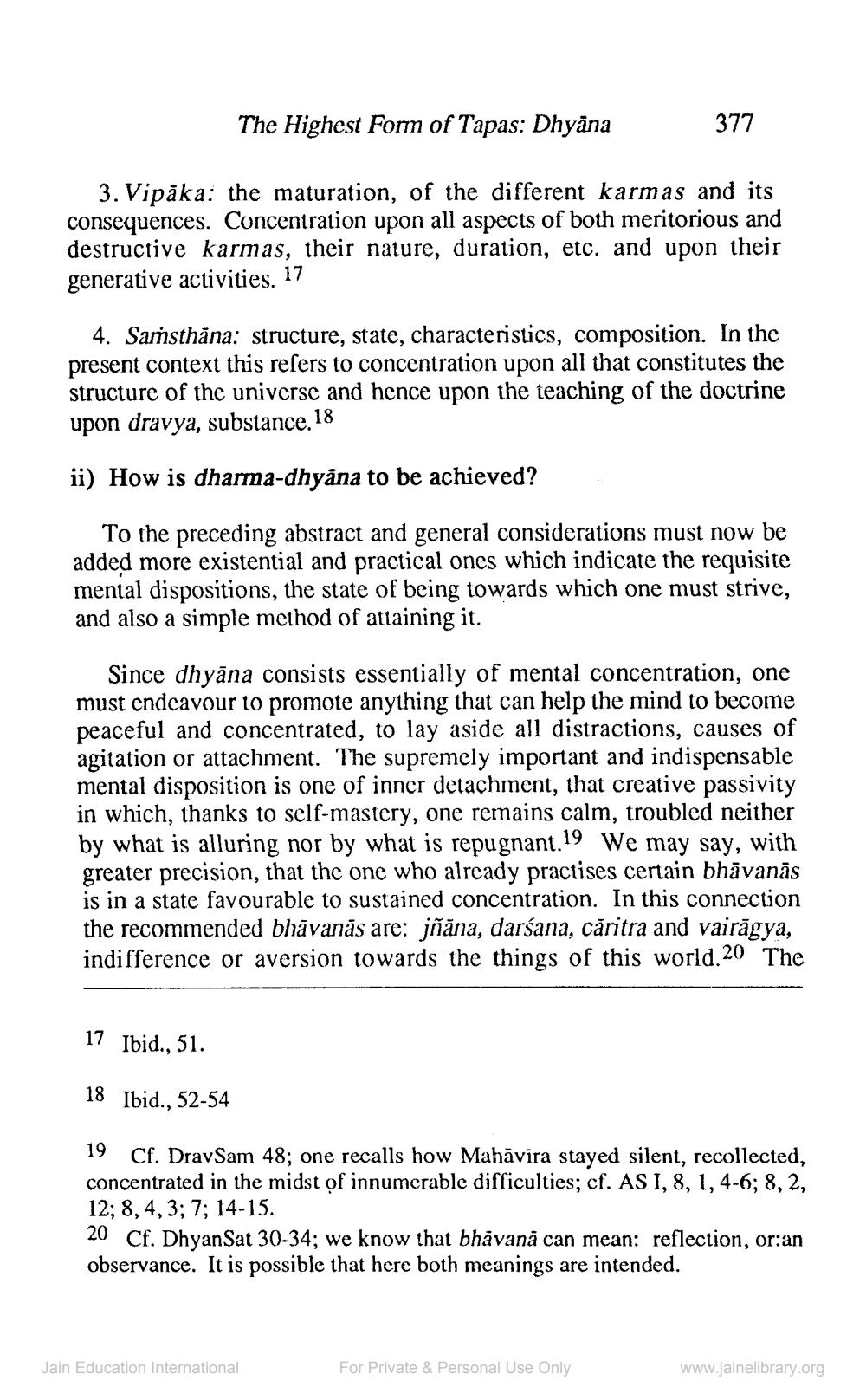________________
The Highest Form of Tapas: Dhyāna
377
3. Vipäka: the maturation, of the different karmas and its consequences. Concentration upon all aspects of both meritorious and destructive karmas, their nature, duration, etc. and upon their generative activities. 17
4. Saṁsthāna: structure, state, characteristics, composition. In the present context this refers to concentration upon all that constitutes the structure of the universe and hence upon the teaching of the doctrine upon dravya, substance.18
ii) How is dharma-dhyāna to be achieved?
To the preceding abstract and general considerations must now be added more existential and practical ones which indicate the requisite mental dispositions, the state of being towards which one must strive, and also a simple method of attaining it.
Since dhyāna consists essentially of mental concentration, one must endeavour to promote anything that can help the mind to become peaceful and concentrated, to lay aside all distractions, causes of agitation or attachment. The supremely important and indispensable mental disposition is one of inner detachment, that creative passivity in which, thanks to self-mastery, one remains calm, troubled neither by what is alluring nor by what is repugnant.19 We may say, with greater precision, that the one who already practises certain bhāvanās is in a state favourable to sustained concentration. In this connection the recommended bhāvanās are: jñāna, darśana, căritra and vairāgya, indifference or aversion towards the things of this world. 20 The
17 Ibid., 51.
18 Ibid., 52-54
19 Cf. DravSam 48; one recalls how Mahāvira stayed silent, recollected, concentrated in the midst of innumerable difficulties; cf. ASI, 8, 1,4-6; 8, 2, 12; 8,4,3; 7; 14-15. 20 Cf. DhyanSat 30-34; we know that bhāvanā can mean: reflection, or:an observance. It is possible that here both meanings are intended.
Jain Education International
For Private & Personal Use Only
www.jainelibrary.org




